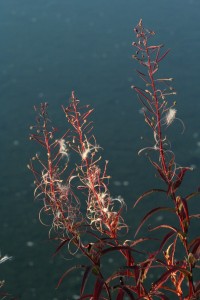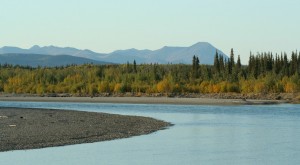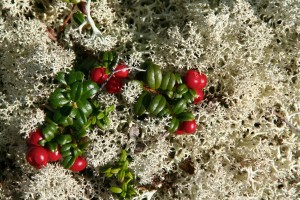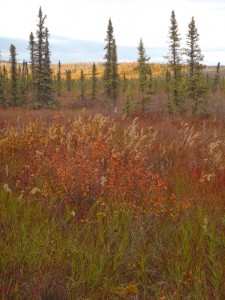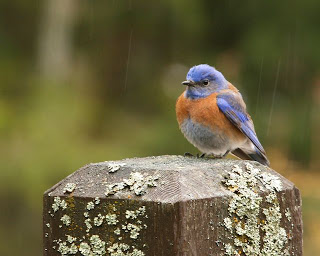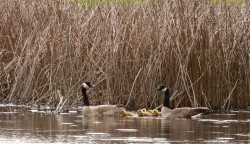As I walked towards the water-filled gravel pit early one morning last week, a sound filled the air that I hadn’t heard since spring–the honking of Canada geese. Canada geese don’t spend the summer in Bettles, Alaska, they only pass through on their way to the North Slope in the spring and then again in the fall on their way south. This only means one thing–autumn is here.
Even though it seems early I shouldn’t be surprised, signs of autumn are everywhere. The fireweed finished blooming earlier than I could remember and a fair number of seed pods have already burst open with fluffy seeds.
Two weeks ago a few random willow and aspen leaves started turning yellow but I dismissed it since every year a few leaves turn before all the others. Once more leaves starting turning and even falling off, I reckoned that autumn had come early. Every day I see more yellow and orange leaves that I didn’t notice the day before.
Even the blueberry brush is turning red. The rainy summer kept the blueberry season short with a meager crop. Those picking blueberries were lucky to find them before the birds and bears devoured them all.
With the early start on fall, the low-bush cranberries are ready and they seem to be plentiful this year. They are best after a hard frost and the closest we’ve been is 31 degrees Fahrenheit on August 9. Even before a frost, they are still quite tasty–even for the bears. I came across a pile of fresh pink bear scat still containing whole cranberries the other evening. They too are preparing for fall.
With all the recent rains, mushrooms are poking out of the ground like jack-in-the-boxes. They pop up one day and the next day they are gone–harvested by squirrels. The squirrels waste no time in packing them off and caching them for winter.
Another sign of fall is the arrival of the sandhill cranes headed south. A group of three starting hanging around after the first Canada geese arrived. Like the geese, they migrate through in the spring and fall. Now every morning, the sound of sandhill cranes and flocks of geese congregating on the airport fill the crisp morning air.
Along with that cool, crisp morning air comes a welcomed smell of fall–wood smoke. As the smoke rises from the chimneys, I can’t help to think of the colder, snowier months ahead and making sure the woodshed is full come November.
While it can snow any month of the year in the Arctic, the first snow that sticks truly signals that summer is over. While it did snow high in the mountains earlier this month, it wasn’t visible from Bettles. Once the first snow blankets the peaks of the Brooks Range, summer is definitely over and winter is only a few weeks away.
Autumn is a short season in the Arctic, sandwiched between summer and winter. It usually goes fast and before long all the leaves will litter the ground, the snow line will have crept down the mountains into Bettles, and all the cranes and geese will be well on their way to warmer wintering grounds.

